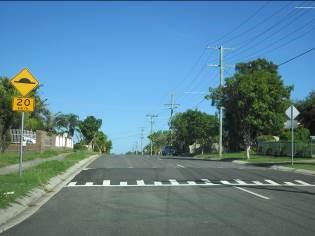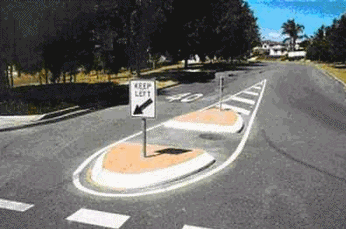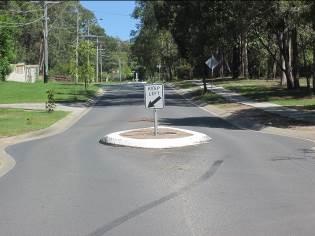Traffic calming devices
What is local area traffic management?
Local area traffic management is also called traffic calming.
Traffic calming involves changing the road in certain areas to:
- physically control and reduce vehicle speeds
- provide a safer environment for pedestrians and cyclists, and
- discourage non-local traffic
Traffic calming will not resolve all traffic concerns and isn’t designed to prevent reckless driving like hooning.
Is traffic calming a suitable option?
A typical residential street has a default speed limit of 50km per hour where the majority of traffic is local (residents who live in the area). Not all residential areas warrant the installation of traffic calming.
Types of traffic calming
Speed humps and platforms
Speed humps and platforms are installed in a suitable locations in streets where traffic surveys have identified continual speeding as an issue.

Traffic islands
Physical traffic control devices like concrete islands can be used:
- to separate traffic at intersections, or
- to provide a refuge for pedestrian crossing points on wide roads.

Chicanes
Chicanes are installed in streets with long sections of straight road to slow traffic speeds, often as part of new developments.

Safety barriers and bollards
Safety barriers and bollards are installed to protect motorists from a hazard adjacent to the road. They are generally the last choice if the hazard cannot be removed, relocated or reduced in severity. They are not designed to stop motorists who are speeding or to protect a resident’s property. Bollards are sometimes used to prevent parking on the nature strip as this can damage underground services.
Traffic calming in rural areas
In rural residential areas, it is more difficult to install traffic calming devices as there is no kerb and channel to control where motorists drive and they are not normally installed on roads with speed limits over 50km per hour.
Removal of traffic calming devices
Removing or modifying a traffic calming device can result in motorists travelling at higher speeds. Often traffic calming devices are installed as part of a new development or where speeding issues have been identified and their effectiveness is compromised if the devices are removed or modified.
Is traffic calming appropriate?
When considering if traffic calming devices are appropriate we investigate things like:
- crash history
- vehicle speeds (how many vehicles are travelling above the speed limit would determine if traffic calming devices are necessary)
- how installation of traffic calming devices on one street will affect surrounding streets
- do the residents in the street (in particular those near the proposed device location) support the installation of traffic calming devices.
As traffic calming is expensive and funds are limited, it is provided in a small number of locations with the greatest need.